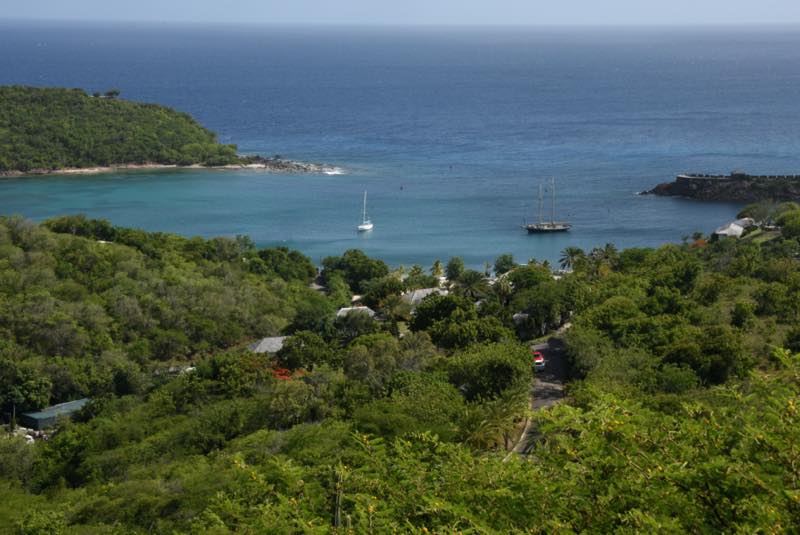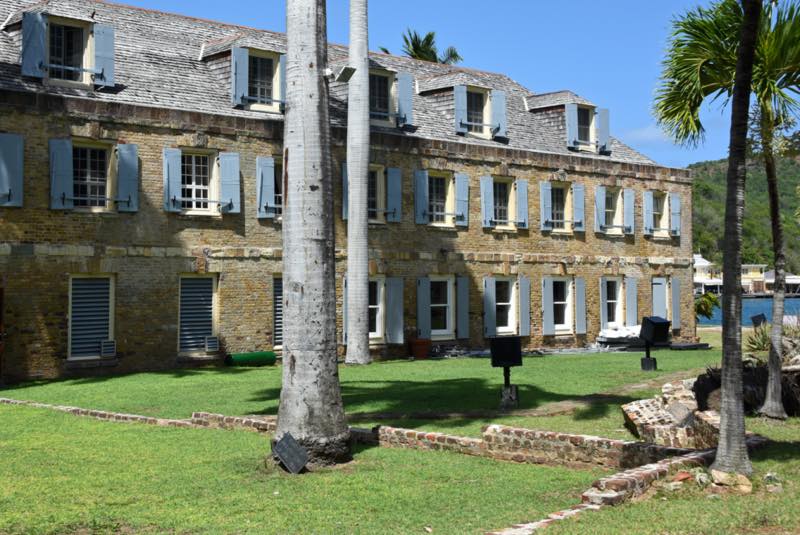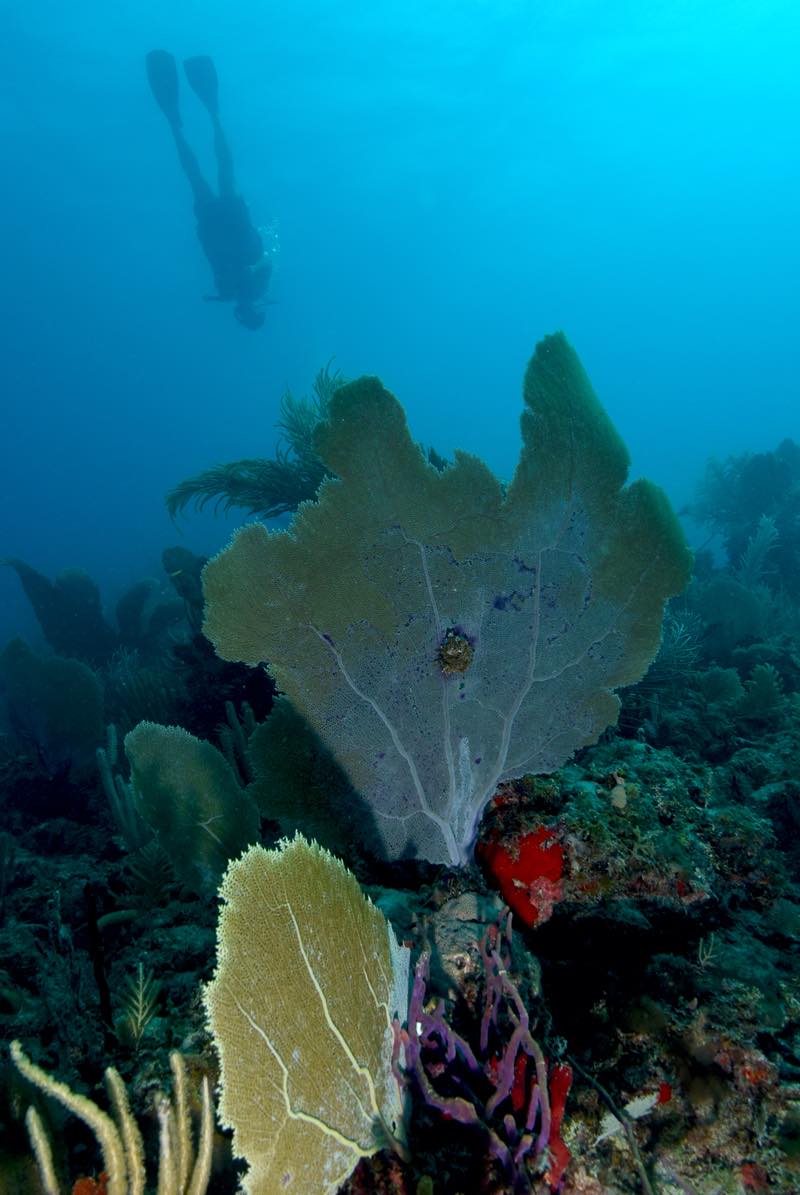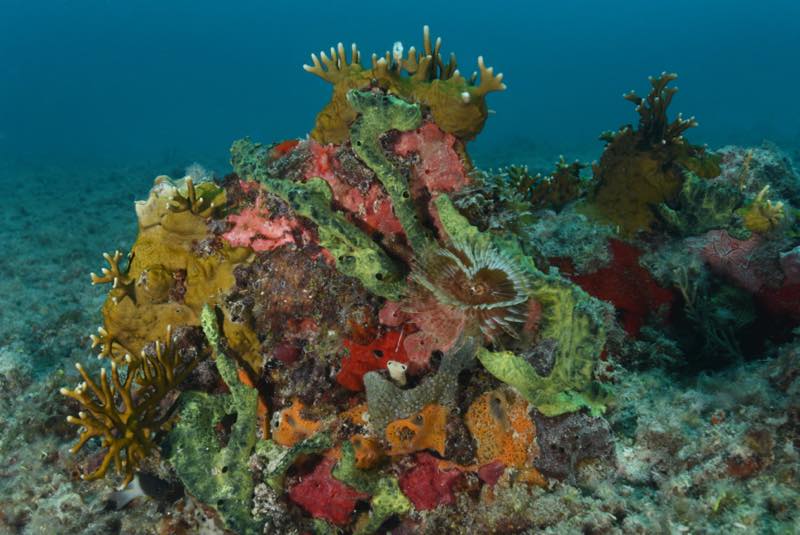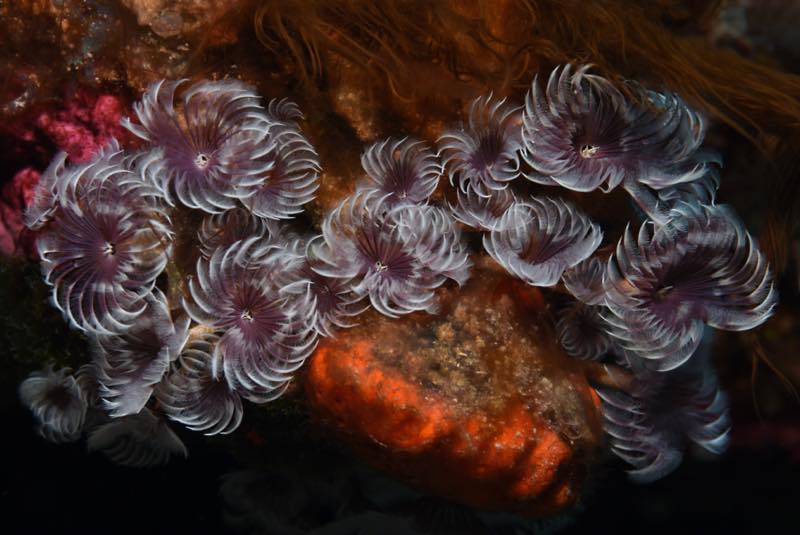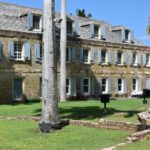Scuba Divers travelling to the Caribbean often end up on islands steeped in diving lore: The Cayman Islands, Bonaire, The US Virgin islands and the British Virgin Islands are a few of these. Of course, all of the islands in this part of the world boast coral reefs and colorful marine life, and on a recent visit to Antigua, we were able to confirm that this is yet another location to be added to diver wish lists.
Words and photos by Michael Salvarezza and Christopher P. Weaver
Antigua is the largest of the British Leeward Islands (108 sq. miles) and enjoys world renown amongst knowledgeable sailors, due largely to its rich nautical history. Lord Horatio Nelson based his fleet here during colonial times and visitors to English Harbor on the southeast side of the island can visit Nelson’s Dockyard, a carefully restored example of British Georgian architecture. During the annual “Sailing Week”, hundreds of yachts can be seen crowding this harbor with competitors swapping stories of sailing and carousing, each tale growing larger and larger as the week goes on.
Antigua likes to boast of its 366 public beaches, “one for each day of the year with one left over”. We were not able to confirm the number, but we can vouch for the beauty of some of these beaches. After a day of diving on the nearby reefs, a cooling breeze beneath a swaying palm tree in front of a setting tropical sun is the perfect way to ease into the night.
The scuba diving in Antigua is often conducted on colorful reefs in 20-70 feet of water. Because of the proximity of good sites on both the Eastern and Western sides of the island, there is always a protected area to dive when the winds kick up. One of the best places to begin your underwater exploration is on the many dive sites of Cade’s Reef.
Cade’s Reef is a barrier reef running parallel to the southwest coast, roughly 20 minutes from Jolly Beach and 50 minutes from St. John’s. The reef is actually divided into an outer area and a more protected inner section. Not unexpectedly, the outer reef area is subject to more wave action but divers here will often glimpse barracuda, moray eels and an occasion Eagle Ray. Also, divers can expect to find Nurse Sharks under the coral ledges and reef sharks patrolling the coral heads in search of prey. When the ocean conditions are too rough for diving the outer reef, the inner reef is generally more protected and here divers can see large amounts of hard and soft coral, angelfish and spotted drum. Bush Gardens, Bluff Cut and Snapper Ledge are some of the best spots along this reef. At Monk’s Head, we encountered a fairly large octopus curiously wandering the reef in broad daylight and our 8-legged friend permitted several portraits to be taken before he scurried away into the darkened recesses of a coral head.
Approximately 7 miles off the West Coast of Antigua and 50 minutes by boat from St. John’s is the Ariadne Shoal. Although the dive sites here rarely dip deeper than 50 feet, divers can expect to find bigger fish here than on most Antigua dive sites. Turtles, Nurse Sharks, and Blacktip reef Sharks are seen on these sites, along with large schools of grunts and snappers. Ming’s Bank, The Cave, Grunts and the Zurich Train Station are some of the named sites of this shoal.
At the entrance to St. John’s Harbor is Sandy Island. This tiny island is surrounded by reefs and outcroppings of rock that are home to brilliantly colored corals, sea fans and gorgonians, along with multitudes of reef fish. If divers venture away from the corals into the sandy patches nearby, stingrays can often be found along with communities of shy Garden Eels. These tentative animals live in tubes burrowed into the sand, and can generally be seen with their heads sticking out of the sand swaying in the water. Unless very careful and silent, approaching divers will cause these eels to disappear into the sand instantly. Some of the dive sites at Sandy Island include The Ledge, Jewel Box and The Barge.
Other favorite dive sites around the island include Green Island and Bird Island, the latter being a national park. These are enticing locations on the eastern side of the island.
There are some good wrecks in Antigua’s clear waters, the most accessible being the wreck of the Andes. This is a schooner than ran aground at the entrance to Deep Bay, off Five Islands Peninsula. From the nearby cliffs, visitors can see the outline of the ship breaking the surface.
In 2017, Hurricane Irma carved a path of destruction through the Caribbean and this monster storm death a terrible blow to nearby Barbuda. The extraordinary devastation on the small island of Barbuda was shocking because its sister-island, Antigua, located only about 40 miles away, was practically unscathed.
Although Antigua managed to escape the punishing destruction from of Hurricane Irma, there were a few cases of some damage to infrastructure. Powerlines, the boardwalk at the cruise facility, and a few hotels were some of the affected areas. However, with rapid recovery efforts, the island became fully operational shortly after the storm passed. The main airport was closed for a day and half but did not sustain any lasting damage. And Barbuda, as well, has made significant progress in repairs and recovery.
Visitors to the islands can once again enjoy the beauty of these islands.
Antigua, admittedly, does not offer the dramatic walls of the Cayman Islands. Nor does it have the wild critter diving of St. Vincent. But the coral reefs do boast healthy populations of brain and elk coral, with a parade of marine life winding through the pillars, coral cuts and canyons to entertain the discerning diver.
And with 366 beaches to explore, the diving here is a perfect accent to a delightful escape from the “real world”. Horatio Nelson knew a good thing when he saw it!
Words and photos by Michael Salvarezza and Christopher P. Weaver
- A collection of Feather Dusters
- A Redband Parrotfish on the reefs of Antigua
- Nelson’s Harbor
- Nelson’s Harbor
- Coral outcroppings host myriad marine life
- The restored fort in Nelson’s Harbor
- Glasseye Snapper can be found under coral overhangs
- A lizard looking for a quick meal
- A tour of Nelson’s Harbor is a must
- A diver swims above seafans on an Antiguan reef
- The beauty of Antigua can be found above the water as well
- A Spotted Moray enjoys the cleaning services of a Sharknose Goby

